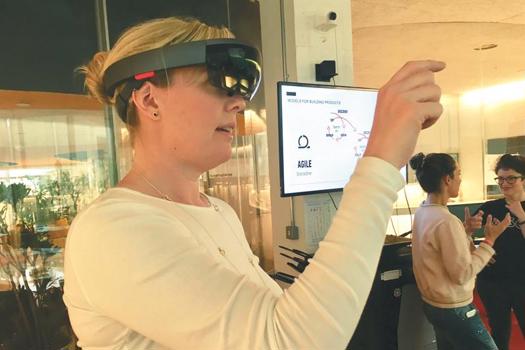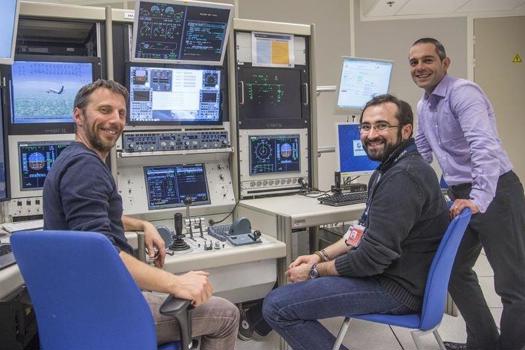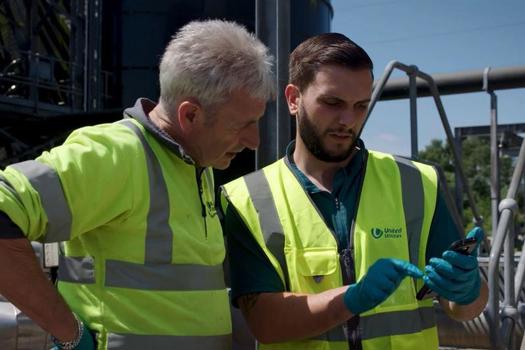Never has the pace of change in the workplace been faster. Last year’s World Economic Forum whitepaper Accelerating Workforce Reskilling for the Fourth Industrial Revolution projected that around 35% of the skills demanded for jobs across industries will have changed by 2020.
So as not to be left behind organisations must get better at reskilling their workforces. And they must do so in a way that gives employees the scope to develop their capabilities on an ongoing basis.
“HR and L&D must move away from the idea that the course is king, and instead focus on creating organisations where learning and development is embedded on a daily basis,” says Lizzie Crowley, skills policy adviser for the CIPD. “Senior leaders and managers must lead by example; championing continual learning and development and monitoring it on a regular basis.”
Learners also need to feel empowered and engaged in how learning is designed and able to help shape learning interventions. Putting employees at the heart of the design process encourages them to take ownership of their development. And then, by measuring what works and what doesn’t, organisations can move with the times and deliver learning that brings long-term benefits to the business.
But, believes Lesley Giles, director of the Work Foundation, the majority of organisations are still too traditional and rigid in the way they approach L&D. “I think moving forward we have to be much more flexible. We have got to recognise that people will have episodes of different types of learning and we must find ways to recognise and accredit that.”
If employees already have particular skillsets the pathways to progression tend to be quite clear says Chris Gray, brand strategy leader at Manpower UK. But for lower-skilled workers there are often a number of different avenues to pursue, which can give them too much choice. “As a result they will need guidance on the skills that will be in most demand, both now and in the future, so they can decide on the option that is right for them. It’s likely that the business will then need to offer financial support to allow this training or qualification to happen.”
Developing skills to meet future demands is critical for employer and employee alike. In the future, Gray asserts, continuous employability will be less about what candidates already know and more about their capacity to learn, adapt and grow in the new world of work. As such Manpower has developed an online Learnability Quotient tool, which is designed to assess an individual’s desire and ability to grow and adapt to new circumstances and challenges that arise during working life.
“With the right skills mix employers can equip workers with the capabilities needed for the constantly-changing workplace,” says Gray. “This will ultimately help them futureproof their business and better position them for the future of work.”
This futureproofing should begin in the recruitment process believes Claire Hall, EVP of people at Menzies Aviation.
“Instead of hiring for skills, as companies have done historically, we should be hiring for the behaviours we need and then training the skills,” she says. “This concept isn’t new, but through the lens of the multi-skilled workforce of the future businesses should be hiring with a focus on behaviours such as a passion for customers and team-working.”
Hall says employers should also look for adaptability, a desire to learn new things and the ability to work with different teams and people.
“Ironically, in the past these attributes may have been perceived as restless, risky and even unreliable. People who have moved around multiple businesses and roles have historically been viewed negatively. However these people are often precisely what we need for the future.”
An effective simple-to-use learning management system should be the bedrock for most businesses as they shift towards this approach, adds Hall. This gives employees access to self-service learning in disciplines outside of their core roles, to support their development into new positions and skills.
“It’s very important that these systems can provide ‘touch of a button’ immediate learning on mobile apps as well as traditional PCs. Learning libraries accessible anywhere anytime allow employees to learn at their own pace when they feel they are ready to take on more,” she adds.
So as more HRDs are turning their attention to reskilling their workforces HR magazine hears from four organisations already embracing agile L&D.
Case study: Placing coaching at the core of management development at Multiplex Europe
Construction company Multiplex Europe has set out to drive an agile learning culture with coaching at its heart. “We recognise that focusing on our management and leadership capability will help engage and motivate our people while optimising our collective ability to improve our performance,” says Michael Venus, head of HR at Multiplex Europe.
As part of this the company has put “significant investment” into building three connected management and leadership programmes (Aspire, Inspire and Pro Coach) that all emphasise self-awareness and personal responsibility in developing leadership skills. Areas addressed include personal branding, flexing styles to suit the characteristics of other team members, and critical commercial skills.
Aspire is targeted at people new to management and is built around the principles of managing yourself, managing teams and managing the business. Inspire addresses the same themes but is for more experienced managers, with a crucial aspect being coaching colleagues going through Aspire. Pro Coach focuses on the targeted development of coaching role models as custodians of Multiplex’s coaching culture.
The thinking behind this approach, which is based on the 70:20:10 model, is that everyone should be continually learning from others in the organisation. To help meet this goal the individuals selected as Pro Coaches are tasked with espousing the principles of leaders who teach and support the Aspire and Inspire learning programmes.
“We’ve architected two cohesive learning programmes, Aspire and Inspire, for different audiences, which collectively focus on the same ‘North Star’ of management and leadership capabilities – meaning we are building a consistent language,” says Chris Knapp, head of L&D. “We recognise that the best learning is agile – in the moment – so we’ve built action learning and coaching at the heart of the learning”. He adds that Pro Coach underpins the coaching of people on both management and leadership programmes.
Check back tomorrow and over the coming days for more case studies on organisations embracing agile L&D









